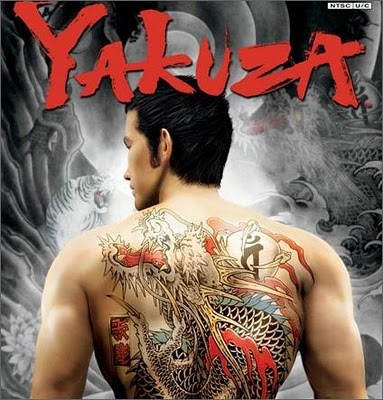
|
|||
The Yakuza, the Japanese Mafia -- The Crime Library — Origins and Traditions
Source : Multiple Sources
Yakuza (also known as gokudo), are members of traditional organized crime syndicates in Japan. The Japanese police, and media by request of the police, call them boryokudan ("violence group"), while the yakuza call themselves "ninkyo dantai" ("chivalrous organizations"). The yakuza are notorious for their strict codes of conduct and very organized nature. They are very prevalent in the Japanese media and operate internationally with an estimated 80,900 members in 2009, the last year for which an estimate is available. Divisions of origin Despite uncertainty about the single origin of yakuza organizations, most modern yakuza derive from two classifications which emerged in the mid-Edo Period (1603–1868): tekiya, those who primarily peddled illicit, stolen or shoddy goods; and bakuto, those who were involved in or participated in gambling. Tekiya (peddlers) were considered one of the lowest social groups in Edo. As they began to form organizations of their own, they took over some administrative duties relating to commerce, such as stall allocation and protection of their commercial activities. During Shinto festivals, these peddlers opened stalls and some members were hired to act as security. Each peddler paid rent in exchange for a stall assignment and protection during the fair. Throughout history, especially since the modern era, Kyushu island has been the largest source of yakuza members, including many renowned bosses in the Yamaguchi-gumi. Isokichi Yoshida (1867–1936) was from the Kitakyushu area and considered the first renowned modern yakuza. Recently Shinobu Tsukasa and Kunio Inoue, the bosses of the two most powerful clans in the Yamaguchi-gumi, are from Kyushu. Fukuoka, the northernmost part of the island, has the largest number of designated syndicates among all of the prefectures. The Edo government eventually formally recognized such tekiya organizations and granted the oyabun (leaders) of tekiya a surname as well as permission to carry a sword — the wakizashi, or short samurai sword (the right to carry the katana, or full-sized samurai swords, remained the exclusive right of the nobility and samurai castes). This was a major step forward for the traders, as formerly only samurai and noblemen were allowed to carry swords. 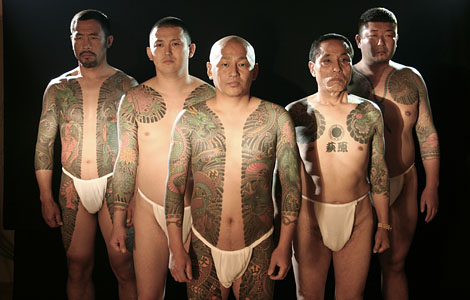 Bakuto (gamblers) had a much lower social standing even than traders, as gambling was illegal. Many small gambling houses cropped up in abandoned temples or shrines at the edge of towns and villages all over Japan. Most of these gambling houses ran loan sharking businesses for clients, and they usually maintained their own security personnel. Shinobu Tsukasa, known as the current head of the Yamaguchi, the largest yakuza syndicate since the mid 20th century. The places themselves, as well as the bakuto, were regarded with disdain by society at large, and much of the undesirable image of the yakuza originates from bakuto; this includes the name yakuza itself (ya-ku-za, or 8-9-3, is a losing hand in Oicho-Kabu, a form of blackjack).
Structure Yakuza hierarchy During the formation of the yakuza, they adopted the traditional Japanese hierarchical structure of oyabun-kobun where kobun ( foster child) owe their allegiance to the oyabun ( foster parent). In a much later period, the code of jingi ( justice and duty) was developed where loyalty and respect are a way of life. The oyabun-kobun relationship is formalized by ceremonial sharing of sake from a single cup. This ritual is not exclusive to the yakuza—it is also commonly performed in traditional Japanese Shinto weddings, and may have been a part of sworn brotherhood relationships. During the World War II period in Japan, the more traditional tekiya/bakuto form of organization declined as the entire population was mobilised to participate in the war effort and society came under strict military government. However, after the war, the yakuza adapted again. Prospective yakuza come from all walks of life. The most romantic tales tell how yakuza accept sons who have been abandoned or exiled by their parents. Many yakuza start out in junior high school or high school as common street thugs or members of bosozoku gangs. Perhaps because of its lower socio-economic status, numerous yakuza members come from Burakumin and ethnic Korean backgrounds. Yakuza groups are headed by an oyabun or kumicho (family head) who gives orders to his subordinates, the kobun. In this respect, the organization is a variation of the traditional Japanese senpai-kohai (senior-junior) model. Members of yakuza gangs cut their family ties and transfer their loyalty to the gang boss. They refer to each other as family members - fathers and elder and younger brothers. The yakuza is populated almost entirely by men, and there are very few women involved who are called "nee-san" (older sister). When the 3rd Yamaguchi-gumi boss (Kazuo Taoka) died in the early 1980s, his wife (Fumiko) took over as boss of Yamaguchi-gumi, albeit for a short time. The yakuza have a very complex organizational structure. There is an overall boss of the syndicate, the kumicho, and directly beneath him are the saiko komon (senior advisor) and so-honbucho (headquarters chief). The second in the chain of command is the wakagashira, who governs several gangs in a region with the help of a fuku-honbucho who is himself responsible for several gangs. The regional gangs themselves are governed by their local boss, the shateigashira. Each member's connection is ranked by the hierarchy of sakazuki (sake sharing). Kumicho are at the top, and control various saiko-komon ( senior advisors). The saiko-komon control their own turfs in different areas or cities. They have their own underlings, including other underbosses, advisors, accountants and enforcers. Those who have received sake from oyabun are part of the immediate family and ranked in terms of elder or younger brothers. However, each kobun, in turn, can offer sakazuki as oyabun to his underling to form an affiliated organisation, which might in turn form lower ranked organizations. In the Yamaguchi-gumi, which controls some 2,500 businesses and 500 yakuza groups, there are even 5th rank subsidiary organizations. 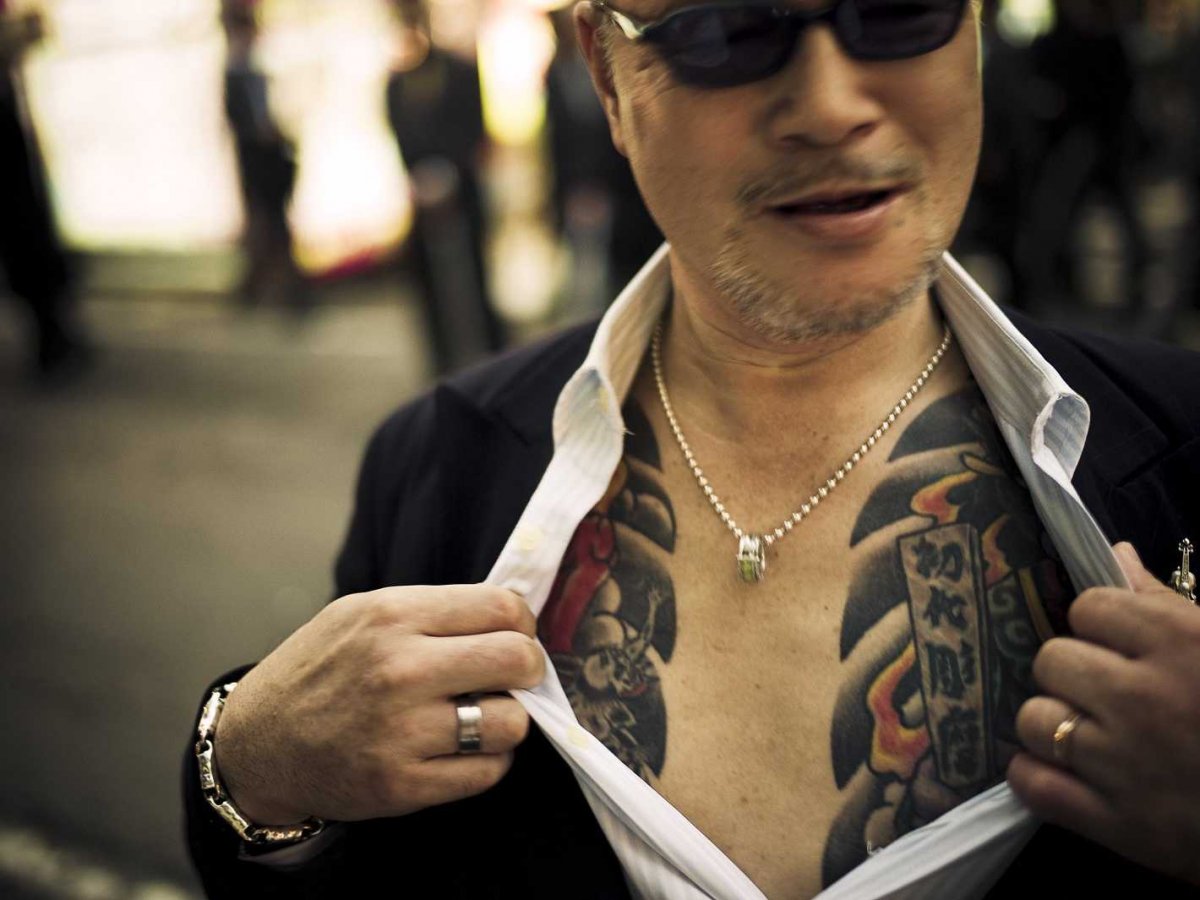 Rituals Yubitsume, or the cutting of one's finger, is a form of penance or apology. Upon a first offence, the transgressor must cut off the tip of his left little finger and give the severed portion to his boss. Sometimes an underboss may do this in penance to the oyabun if he wants to spare a member of his own gang from further retaliation. Its origin stems from the traditional way of holding a Japanese sword. The bottom three fingers of each hand are used to grip the sword tightly, with the thumb and index fingers slightly loose. The removal of digits starting with the little finger moving up the hand to the index finger progressively weakens a person's sword grip. The idea is that a person with a weak sword grip then has to rely more on the group for protection—reducing individual action. In recent years, prosthetic fingertips have been developed to disguise this distinctive appearance. 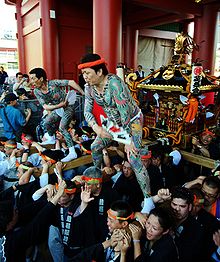 Many yakuza have full-body tattoos (even their private parts). These tattoos, known as irezumi in Japan, are still often "hand-poked", that is, the ink is inserted beneath the skin using non-electrical, hand-made and hand held tools with needles of sharpened bamboo or steel. The procedure is expensive and painful and can take years to complete. When yakuza members play Oicho-Kabu cards with each other, they often remove their shirts or open them up and drape them around their waists. This allows them to display their full-body tattoos to each other. This is one of the few times that yakuza members display their tattoos to others, as they normally keep them concealed in public with long-sleeved and high-necked shirts. When new members join, they are often required to remove their trousers as well and reveal any lower body tattoos.\ Current activities Japan Much of the current activities of the yakuza can be understood in the light of their feudal origin. First, they are not a secret society like their counterparts of the Italian mafia and Chinese triads. Yakuza organizations often have an office with a wooden board on the front door, openly displaying their group name or emblem. ...The yakuza tend to be gentler than their Italian cousins. In general, they are not involved in theft, burglary, armed robbery, or other street crimes. — Jake Adelstein Old stereotypes are: members often wear sunglasses and colourful suits so that their profession can be immediately recognized by civilians (katagi); and even the way many yakuza walk is different from ordinary citizens. Their wide gait is markedly different from the unassuming way many Japanese prefer to adopt. Alternatively, yakuza can dress more conservatively and flash their tattoos to indicate their affiliation when the need arises. On occasion, they also sport insignia pins on their lapels. One yakuza family] even printed a monthly newsletter with details on prisons, weddings, funerals, murders, and poems by leaders. Until recently, the majority of yakuza income came from protection rackets in shopping, entertainment and red-light districts within their territory. This is mainly due to the reluctance of such businesses to seek help from the police. The Japanese police are also reluctant to interfere in internal matters in recognized communities such as shopping arcades, schools/universities, night districts and so on. In this sense, yakuza are still regarded as semi-legitimate organizations. For example, immediately after the Kobe earthquake, the Yamaguchi-gumi, whose headquarters are in Kobe, mobilized itself to provide disaster relief services (including the use of a helicopter), and this was widely reported by the media as a contrast to the much slower response by the Japanese government. The yakuza repeated their aid after the 2011 Tohoku earthquake and tsunami, with groups opening their offices to refugees and sending dozens of trucks with supplies to affected areas. For this reason, many yakuza regard their income and hustle (shinogi) as a collection of a feudal tax. Many yakuza syndicates, notably the Yamaguchi-gumi, officially forbid their members from engaging in drug trafficking, while some yakuza syndicates, notably the Dojin-kai, are heavily involved in drug trafficking. Some yakuza groups are heavily involved in sex-related industries. Some yakuza groups are known to deal extensively in human trafficking. The Philippines, for instance, is a source of young women. Yakuza trick girls from impoverished villages into coming to Japan, where they are promised respectable jobs with good wages. Instead, they are forced into becoming prostitutes and strippers. The alleys and streets of Shinjuku are a popular modern Tokyo yakuza hangout. 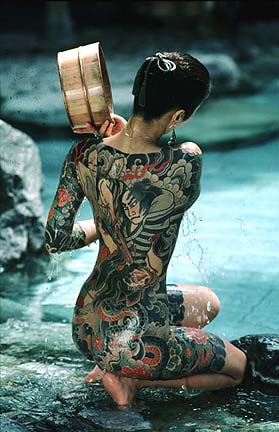 Yakuza frequently engage in a uniquely Japanese form of extortion, known as sokaiya. In essence, this is a specialized form of protection racket. Instead of harassing small businesses, the yakuza harasses a stockholders' meeting of a larger corporation. They simply scare the ordinary stockholder with the presence of yakuza operatives, who obtain the right to attend the meeting by a small purchase of stock. They also engage in simple blackmail, obtaining incriminating or embarrassing information about a company's practices or leaders. Once the yakuza gain a foothold in these companies, they will work for them to protect the company from having such internal scandals exposed to the public. Some companies still include payoffs as part of their annual budget. Yakuza also have ties to the Japanese realty market and banking, through jiageya. Jiageya specialize in inducing holders of small real estate to sell their property so that estate companies can carry out much larger development plans. Japan's bubble economy of the 1980s is often blamed on real estate speculation by banking subsidiaries. After the collapse of the Japanese property bubble, a manager of a major bank in Nagoya was assassinated, and much speculation ensued about the banking industry's indirect connection to the Japanese underworld. Yakuza often take part in local festivals such as Sanja Matsuri where they often carry the shrine through the streets proudly showing off their elaborate tattoos. Yakuza have been known to make large investments in legitimate, mainstream companies. In 1989, Susumu Ishii, the Oyabun of the Inagawa-kai (a well known yakuza group) bought US$255 million worth of Tokyo Kyuko Electric Railway's stock. Japan's Securities and Exchange Surveillance Commission has knowledge of more than 50 listed companies with ties to organized crime, and in March 2008, the Osaka Securities Exchange decided to review all listed companies and expel those with yakuza ties. As a matter of principle, theft is not recognised as a legitimate activity of yakuza. This is in line with the idea that their activities are semi-open; theft by definition would be a covert activity. More importantly, such an act would be considered a trespass by the community. Also, yakuza usually do not conduct the actual business operation by themselves. Core business activities such as merchandising, loan sharking or management of gambling houses are typically managed by non-yakuza members who pay protection fees for their activities. 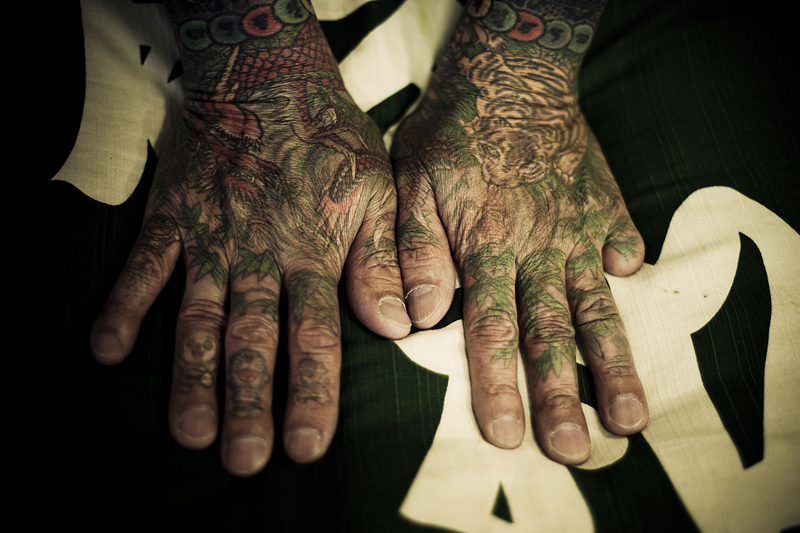
There is much evidence of yakuza involvement in international crime. There are many tattooed yakuza members imprisoned in various Asian prisons for such crimes as drug trafficking and arms smuggling. In 1997, one verified yakuza member was caught smuggling 4 kilograms (8.82 pounds) of heroin into Canada. In 1999, Italian-American mafia Bonanno family member, Mickey Zaffarano, was overheard talking about the profits of the pornography trade that both families could profit from. Another yakuza racket is bringing women of other ethnicities/races, especially East European and Asian to Japan under the lure of a glamorous position, then forcing the women into prostitution. Because of their history as a legitimate feudal organization and their connection to the Japanese political system through the uyoku (extreme right-wing political groups), yakuza are somewhat a part of the Japanese establishment, with six fan magazines reporting on their activities. One study found that one in ten adults under the age of 40 believed that the yakuza should be allowed to exist[16]. In the 1980s in Fukuoka, a yakuza war spiraled out of control and civilians were hurt. It was a large conflict between the Yamaguchi-gumi and Dojin-kai, called the Yama-Michi War. The police stepped in and forced the yakuza bosses on both sides to declare a truce in public. At various times, people in Japanese cities have launched anti-yakuza campaigns with mixed and varied success. In March 1995, the Japanese government passed the Act for Prevention of Unlawful Activities by Criminal Gang Members which made traditional racketeering much more difficult. Beginning in 2009, led by agency chief Takaharu Ando, Japanese police began to crack down on the gangs. Kodo-kai chief Kiyoshi Takayama was arrested in late 2010. In December 2010, police arrested Yamaguchi-gumi's alleged number three leader, Tadashi Irie. According to the media, encouraged by tougher anti-yakuza laws and legislation, local governments and construction companies have begun to shun or ban yakuza activities or involvement in their communities or construction projects. The police are handicapped, however, by Japan's lack of an equivalent to plea bargaining, witness protection, or the United States' RICO Act. Laws were enacted in Osaka and Tokyo in 2010 and 2011 to try to combat Yakuza influence by making it illegal for any business to do business with the Yakuza. Ironically, Kobe, the home city of the largest yakuza syndicate Yamaguchi-gumi, is one of the safest cities in Japan, because "cheap" criminals such as street gangs and thugs are afraid to attract the yakuza's attention so they avoid being active in the city. Yakuza's aid in Tohoku catastrophe Following the Tohoku earthquake and tsunami on 11 March 2011, the Yakuza sent hundreds of trucks filled with "food, water, blankets, and sanitary accessories" to aid the people in the affected areas of the natural disaster. CNNMéxico said that although the Yakuza operates through extortion and other violent methods, they are also "[moved] swiftly and quietly to provide aid to those most in need." Such actions by the Yakuza are a result of their knowing of what it is like to "fend for yourself," without any government aid or community support, because they are also considered "outcast" and "dropouts from society." In addition, the Yakuza's code of honor (ninkyo) reportedly values justice and duty above anything else, and forbids allowing others to suffer. United States Yakuza activity in the United States is mostly relegated to Hawaii, but they have made their presence known in other parts of the country, including Fresno, Raleigh, Houston, Oregon, Denver, Chicago, and New York City. The yakuza are said to use Hawaii as a way station between Japan and mainland America, smuggling methamphetamine into the country and smuggling back firearms to Japan. They easily fit into the local population, since many tourists from Japan and other Asian countries visit the islands on a regular basis, and many Hawaii residents are of full or partial Japanese descent. They also work with local gangs, funneling Japanese tourists to gambling parlors and brothels. In California, the yakuza have made alliances with local Vietnamese and Korean gangs as well as Chinese triads, with Vietnamese as the most common alliance. The alliances with Vietnamese gangs dated back in the late 1980s, and most Vietnamese gangsters were used as muscle, as they had potential to become extremely violent as needed. (Yakuza saw the potential following the constant Vietnamese cafe shoot outs, and home invasion burglaries throughout the 1980s and early 1990s). The Vietnamese gangsters were also not as reckless or as easily caught as other ethnic gangs around the area, which attracts the Yakuza. In New York City, they appear to collect finders fees from American mafiosos and businessmen for guiding Japanese tourists to gambling establishments, both legal and illegal. Handguns manufactured in the US account for a large share (33%) of handguns seized in Japan, followed by China (16%), and the Philippines (10%). In 1990, a Smith & Wesson .38 caliber revolver that cost $275 in the US could sell for up to $4,000 in Tokyo. By 1997 it would sell for only $500, due to the proliferation of guns in Japan during the 1990s. The FBI suspects that the yakuza use various operations to launder money in the U.S. In 2001, the FBI's representative in Tokyo arranged for Tadamasa Goto, the head of the group Goto-gumi, to receive a liver transplant in the United States, in return for information of Yamaguchi-gumi operations in the US. This was done without prior consultation of the NPA. The journalist who uncovered the deal received threats by Goto and was given police protection in the US and in Japan. North Korea Yakuza member Yoshiaki Sawada was released in North Korea after spending 5 years in the country for attempting to bribe a North Korean official and drug-smuggling comments powered by Disqus Submit News/Videos/Links | Discuss article | Article Link | More Unsolved and Unexplained Mysteries |
More can be addded on request. Direct your requests at vinit@theunexplainedmysteries.com
